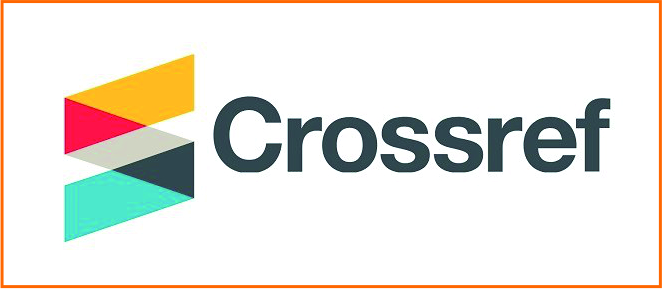Barriers To Implementing Sustainable Interior Design In Interior Construction Projects In Indonesia
Abstract
The trajectory of interior design styles remains ongoing in contemporary times. Numerous scholarly investigations persist in exploring the issue of interior design trend forecasting, with sustainable design being among the focal points. Measurement of the barriers to sustainable interior design implementation in Indonesian interior building projects is the goal of this study. After conducting a literature review on obstacles using litmaps.com, interior project actors were given questionnaires with open-ended questions for a correlational qualitative analysis. The purpose of this study is to confirm, pinpoint, and unearth novel phenomena related to the implementation of sustainable interior design in Indonesian interior construction projects. This study looks at how standards compliance, training, and stakeholder perceptions affect issues with technology and health, safety, and environmental (HSE) management. Regression analysis reinforces the Technology Acceptance Model by demonstrating the critical role that training and favorable perceptions play in encouraging technology adoption as well as the value of standards in reducing obstacles. Furthermore, this study overcomes technological obstacles by emphasizing the significance of environmental knowledge and stakeholder issues in comparison to conventional knowledge. Stakeholder involvement, environmental awareness, training, and standard compliance are all emphasized in the study's evaluation and confirmation of project management concepts. Furthermore, the author suggests a reevaluation of the significance of knowledge and cognition.
Keywords
Full Text:
PDFReferences
Ahn, Y.H., Pearce, A.R., Wang, Y. and Wang, G., 2013. Drivers and barriers of sustainable design and construction: The perception of green building experience. International Journal of Sustainable Building Technology and Urban Development, 4(1), pp.35-45.
Argote, L., McEvily, B., & Reagans, R. (2003). Managing knowledge in organizations: An integrative framework and review of emerging themes. Management science, 49(4), 571-582.
Arisha, Nada Ahmed., 2023. Applying Trend Forecasting Methodology for Raising the Visual Creativity of Interior Design Students (An Experiential Study). International Design Journal, 13 (1)
Ashour, M., Mahdiyar, A., Haron, S.H. and Hanafi, M.H., 2022. Barriers to the practice of sustainable interior architecture and design for interior renovations: A Parsimonious-Cybernetic Fuzzy AHP approach. Journal of Cleaner Production, 366, p.132958.
Avery, L., Rotondi, N., McKnight, C., Firestone, M., Smylie, J., & Rotondi, M. (2019). Unweighted regression models perform better than weighted regression techniques for respondent-driven sampling data: results from a simulation study. BMC medical research methodology, 19, 1-13.
Bacon, L., 2011. Interior designer's attitudes toward sustainable interior design practices and barriers encountered when using sustainable interior design practices.
Buniya, M.K., Othman, I., Sunindijo, R.Y., Kineber, A.F., Mussi, E. and Ahmad, H., 2021. Barriers to safety program implementation in the construction industry. Ain Shams Engineering Journal, 12(1), pp.65-72.
Burkut, E.B., 2023. Literature Review and Analysis of Publications on Sustainability & Sustainable Design in The Field of Interior Architecture & Interior Design. Kent Akademisi, 16(4), pp.2672-2689.
Chan, A.P., Darko, A., Ameyaw, E.E. and Owusu-Manu, D.G., 2017. Barriers affecting the adoption of green building technologies. Journal of Management in Engineering, 33(3), p.04016057.
Compeau, D. R., & Higgins, C. A. (1995). Computer self-efficacy: Development of a measure and initial test. MIS quarterly, 189-211
Davis, F. D., Bagozzi, R. P., & Warshaw, P. R. (1989). User acceptance of computer technology: A comparison of two theoretical models. Management science, 35(8), 982-1003.
Dawes, J., 2008. Do data characteristics change according to the number of scale points used? An experiment using 5-point, 7-point and 10-point scales. International journal of market research, 50(1), pp.61-104.
Descamps, J., Le Hanneur, M., Bouché, P. A., Boukebous, B., Duranthon, L. D., & Grimberg, J. (2023). Do web-based follow-up surveys have a better response rate than traditional paper-based questionnaires following outpatient arthroscopic rotator cuff repair? A randomized controlled trial. Orthopaedics & Traumatology: Surgery & Research, 109(2), 103479.
Detlef, Groth., Stefanie, Hartmann., Sebastian, Klie., Joachim, Selbig. (2013). Principal Components Analysis. Methods of Molecular Biology, 930:527-547. doi: 10.1007/978-1-62703-059-5_22
Dipraja, Mazaya Raffrabiha., Hidayati, Rini., 2023. Penerapan Material Bekas Pada Interior Kedai Turi Sebagai Pendekatan Sustainable Design. Siar IV
El-Reedy, M.A., 2012. Construction management for industrial projects: a modular guide for project managers. John Wiley & Sons.
Freeman, R. E., Harrison, J. S., Wicks, A. C., Parmar, B. L., & De Colle, S. (2010). Stakeholder theory: The state of the art.
Hao, Zengchao. (2022). Application of Entropy Theory to Multivariate Hydrologic Analysis. (Volumes I and II). doi: 10.31390/gradschool_disstheses.4512
Haron, N.A., Devi, P., Hassim, S., Alias, A.H., Tahir, M.M. and Harun, A.N., 2017, December. Project management practice and its effects on project success in Malaysian construction industry. In IOP Conference Series: Materials Science and Engineering (Vol. 291, p. 012008). IOP Publishing.
https://app.litmaps.com/seed/135171530?screenshot=true, diakses tanggal 3 Februari 2024
Ibukun, O Famakin., Othman, I., Kineber, A.F., Oke, A.E., Olanrewaju, O.I., Hamed, M.M. and Olayemi, T.M., 2023. Building Information Modeling Execution Drivers for Sustainable Building Developments. Sustainability, 15(4), p.3445.
International Project Management Association (IPMA) (2015) International Competence Baseline for Project, Programme and Portfolio Management, Holland Version 4.0, p. 36.
Jha, K.N., 2011. Construction project management: Theory and practice. Pearson Education India.
Kerzner, H., 2017. Project management: a systems approach to planning, scheduling, and controlling. John Wiley & Sons.
Khamis, Noha Essam., 2021. A Pedagogical Context to Integrate Trend Forecasting Techniques Into Innovative Design Education. Journal of Arts & Architecture Research Studies, 2(3), pp.83-103.
Kineber, A.F., Massoud, M.M., Hamed, M.M. and Qaralleh, T.J.O., 2023. Exploring Sustainable Interior Design Implementation Barriers: A Partial Least Structural Equation Modeling Approach. Sustainability, 15(5), p.4663.
Kineber, A.F., Massoud, M.M., Hamed, M.M. and Qaralleh, T.J.O., 2023. Exploring Sustainable Interior Design Implementation Barriers: A Partial Least Structural Equation Modeling Approach. Sustainability, 15(5), p.4663.
Kineber, A.F., Oke, A., Aliu, J., Hamed, M.M. and Oputu, E., 2023. Exploring the adoption of cyber (digital) technology for sustainable construction: a structural equation modeling of critical success factors. Sustainability, 15(6), p.5043.
Kineber, A.F., Oke, A., Hamed, M.M., Alyanbaawi, A., Elmansoury, A. and Daoud, A.O., 2023. Decision making model for identifying the cyber technology implementation benefits for sustainable residential building: a mathematical PLS-SEM approach. Sustainability, 15(3), p.2458.
Kineber, A.F., Othman, I., Oke, A.E., Chileshe, N. and Zayed, T., 2021. Exploring the value management critical success factors for sustainable residential building–A structural equation modelling approach. Journal of Cleaner Production, 293, p.126115.
Kusumarini, Y., 2015. Konstruksi Teori Sustainable Interior Design: Pendekatan Holistik Eco-Socio-Econo Interior Design Kontekstual Di Indonesia (Doctoral dissertation, Institut Teknologi Sepuluh Nopember).
Larasati, D. and Watanabe, T., 2009. Evaluation study on existing condition of indonesian construction industry: How to improve performance and the competitiveness. Society for Social Management Systems Internet Journal, 5(1).
Leavy, P. (Ed.). 2014. The Oxford handbook of qualitative research. Oxford University Press, USA.
Leighton, K., Kardong-Edgren, S., Schneidereith, T. and Foisy-Doll, C., 2021. Using social media and snowball sampling as an alternative recruitment strategy for research. Clinical simulation in nursing, 55, pp.37-42.
Lo, S. K., Li, I. T., Tsou, T. S., & See, L. (1995). Non-significant in univariate but significant in multivariate analysis: a discussion with examples. Changgeng Yi Xue Za Zhi, 18(2), 95-101.
Menon, V., & Muraleedharan, A. (2020). Internet-based surveys: relevance, methodological considerations and troubleshooting strategies. General psychiatry, 33(5).
Miller, A., Radcliffe, D., & Isokangas, E. (2009). A perception‐influence model for the management of technology implementation in construction. Construction Innovation, 9(2), 168-183.
Mohsen, Mousa S, Rana Mertaneh. 2023. Exploring the Interior Designers’ Attitudes toward Sustainable Interior Design Practices: The Case of Jordan. Sustainability 2023, 15, 14491.
Nguyen, H.T., Skitmore, M., Gray, M., Zhang, X. and Olanipekun, A.O., 2017. Will green building development take off? An exploratory study of barriers to green building in Vietnam. Resources, Conservation and Recycling, 127, pp.8-20.
Nomor, P.P., 2021. Tahun 2021 tentang Perubahan Atas Peraturan Presiden Nomor 16 Tahun 2021 tentang Bangunan Gedung. Lembaran Negara Republik Indonesia Tahun.
Oke, A.E., Farouk Kineber, A., Abdel-Tawab, M., Abubakar, A.S., Albukhari, I. and Kingsley, C., 2023. Barriers to the implementation of cloud computing for sustainable construction in a developing economy. International Journal of Building Pathology and Adaptation, 41(5), pp.988-1013.
Oke, A.E., Kineber, A.F., Albukhari, I. and Dada, A.J., 2021. Modeling the robotics implementation barriers for construction projects in developing countries. International Journal of Building Pathology and Adaptation.
Oke, A.E., Kineber, A.F., Alsolami, B. and Kingsley, C., 2023. Adoption of cloud computing tools for sustainable construction: A structural equation modelling approach. Journal of Facilities Management, 21(3), pp.334-351.
Olanrewaju, O.I., Kineber, A.F., Chileshe, N. and Edwards, D.J., 2022. Modelling the relationship between Building Information Modelling (BIM) implementation barriers, usage and awareness on building project lifecycle. Building and Environment, 207, p.108556.
Paryoko, V.G.P.J. and Rachman, R.A.F.N., 2023. Optimalisasi Pemanfaatan Material Furnitur dalam Desain Interior Berkelanjutan. Waca Cipta Ruang, 9(1), pp.17-24.
Pasaribu, Y.M., 2019. Dasar Pengadaan Dan Pengelolaan Jasa Desain di Indonesia. Badan Ekonomi Kreatif, Deputi Riset, Edukasi dan Pengadaan. Jakarta. Waca Cipta Ruang : Jurnal Ilmiah Desain Interior. Volume 9 Nomor 1 (2023) halaman 17-24 DOI 10.34010/wcr.v9i1.8457
PM4SD (2013). Project Management for Sustainable Development: A Guidebook. Foundation for European Sustainable Tourism.
Poikolainen, K. (2017). A Note on the Statistical Power of Regression Analysis. Alcohol and Alcoholism, 52(5), 625-625.
Project Management Institute. (2014). A Guide to the Project Management Body of Knowledge (PMBOK® Guide)-(GERMAN). Project Management Institute.
RAKYAT, M.P.U.D.P., 2021. Peraturan Menteri Pekerjaan Umum Dan Perumahan Rakyat Republik Indonesia Nomor 9 Tahun 2021 Tentang Pedoman Penyelenggaraan Konstruksi Berkelanjutan.
Rana, Y., 2014. Panduan Teknis Perangkat Penilaian Bangunan Hijau Untuk Bangunan Baru, versi 1.2. Green Building Council Indonesia, Jakarta.
Randhawa, A. and Kumar, A., 2017. Exploring sustainability of smart development initiatives in India. International Journal of Sustainable Built Environment, 6(2), pp.701-710.
Reason, J. (2016). Managing the risks of organizational accidents. Routledge.
Rozendal, S., & Hale, A. R. (2000, February). Analysis of HSE-Performance Indicators. In SPE/IADC Drilling Conference and Exhibition (pp. SPE-59242). SPE
Rusli, M. (2021). Merancang Penelitian Kualitatif Dasar/Deskriptif dan Studi Kasus. Al-Ubudiyah: Jurnal Pendidikan Dan Studi Islam, 2(1), 48-60.
Singh, P.S.J., Oke, A.E., Kineber, A.F., Olanrewaju, O.I., Omole, O., Samsurijan, M.S. and Ramli, R.A., 2023. A mathematical analysis of 4IR innovation barriers in developmental social work—A structural equation modeling approach. Mathematics, 11(4), p.1003.
Tischner, U., & Charter, M. (2017). Sustainable product design. In Sustainable Solutions (pp. 118-138). Routledge.
Tushman, M. L., & Nelson, R. R. (1990). Introduction: Technology, organizations, and innovation. Administrative science quarterly, 35(1), 1-8.
White, I. R., Carpenter, J., & Horton, N. J. (2018). A mean score method for sensitivity analysis to departures from the missing at random assumption in randomised trials. Statistica Sinica, 28(4), 1985.
Wibowo, M., & Wiguna, I. 2015. Pengaruh Manajemen Proyek Terhadap Keberhasilan Desainer Interior Di Surabaya (Doctoral dissertation, Petra Christian University).
Zulkipli, F., Nopiah, Z. M., Jamian, N. H., Ezlin, N., Basri, A., & Kie, C. J. (2022). Mean Score Analysis on Awareness of Solid Waste Management in Malaysia. International Journal of Academic Research in Business and Social Sciences, 12(6), 649-658.
DOI: http://dx.doi.org/10.36448/ja.v14i2.3569

This work is licensed under a Creative Commons Attribution-NonCommercial-NoDerivatives 4.0 International License.
JURNAL ARSITEKTUR saat ini terindeks:











This work is licensed under a Creative Commons Attribution-NonCommercial 4.0 International License




